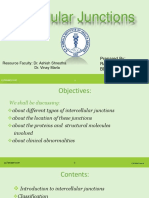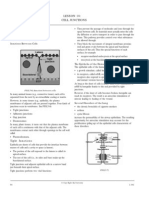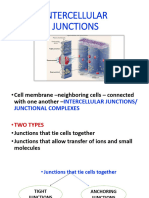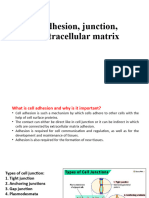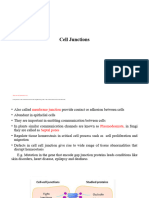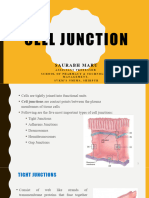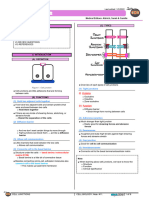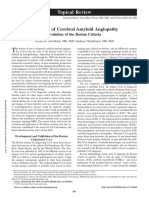0% found this document useful (0 votes)
229 views1 pageIntercellular Junctions Overview
Intercellular junctions connect adjacent cells and allow communication between them. There are several types of intercellular junctions:
1) Tight junctions form a seal between cells and regulate molecular transport while preventing passive diffusion between cells.
2) Adherens junctions provide strong mechanical attachment between cells and link their cytoskeletons.
3) Desmosomes strongly couple adjacent cell's intermediate filaments to strengthen tissues like kidney tubules.
4) Hemidesmosomes anchor the cytoskeleton to the extracellular matrix like in skin and prevent blistering from diseases.
5) Gap junctions directly transfer small molecules and ions between cells, allowing for electrical signaling without neurotransmitters.
Uploaded by
Joshua Mari De OcampoCopyright
© © All Rights Reserved
We take content rights seriously. If you suspect this is your content, claim it here.
Available Formats
Download as DOCX, PDF, TXT or read online on Scribd
0% found this document useful (0 votes)
229 views1 pageIntercellular Junctions Overview
Intercellular junctions connect adjacent cells and allow communication between them. There are several types of intercellular junctions:
1) Tight junctions form a seal between cells and regulate molecular transport while preventing passive diffusion between cells.
2) Adherens junctions provide strong mechanical attachment between cells and link their cytoskeletons.
3) Desmosomes strongly couple adjacent cell's intermediate filaments to strengthen tissues like kidney tubules.
4) Hemidesmosomes anchor the cytoskeleton to the extracellular matrix like in skin and prevent blistering from diseases.
5) Gap junctions directly transfer small molecules and ions between cells, allowing for electrical signaling without neurotransmitters.
Uploaded by
Joshua Mari De OcampoCopyright
© © All Rights Reserved
We take content rights seriously. If you suspect this is your content, claim it here.
Available Formats
Download as DOCX, PDF, TXT or read online on Scribd
/ 1









